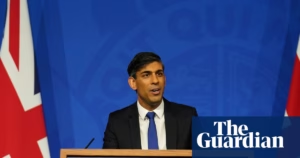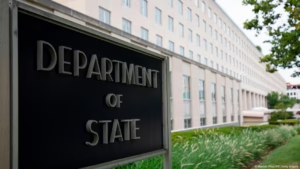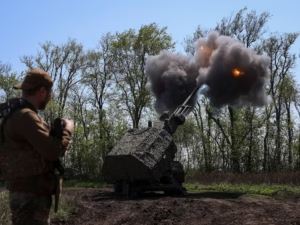A new round of negotiations aimed at finding a solution to Tehran’s nuclear activities is set to occur on Saturday. High hopes are riding on these talks, which could potentially prevent further conflict in the region. In an interview with Time magazine, President Trump expressed optimism about the prospects of a deal, stating, “I think we’re going to make a deal with Iran. Nobody else could do that.” Trump’s previous decision to leave a previous nuclear deal in 2018 due to its perceived inadequacies still looms over the talks.
These discussions have the potential to significantly alter regional and global security landscapes. Avoidance of a U.S.-backed Israeli strike against Iran’s nuclear facilities and the possibility of preventing Iran from developing a nuclear weapon are critical outcomes. A successful deal could also have profound implications on Iran’s economy and political structures, as it would ease American sanctions and open the door to foreign investment.
Steve Witcoff, President Trump’s Middle East envoy; Abbas Araghchi, Iran’s foreign minister; and teams of technical experts are scheduled to meet in Oman, which is mediating the talks. These negotiations will include “expert talks,” focusing on the technical aspects such as the monitoring of Iran’s nuclear facilities, enrichment levels, and dealing with stockpiles of highly enriched uranium, along with sanctions relief.
Mr. Trump has framed the main goal of these negotiations as preventing Iran from obtaining nuclear weapons. Although this stance has been echoed by his administration, mixed messages regarding its precise meaning have been conveyed. Saturday’s discussions may help clarify the specifics of a potential deal.
A new nuclear agreement could potentially prevent or delay broader conflicts between Iran, Israel, and the United States. Both nations have reported direct attacks since the beginning of the war in Gaza in 2023. According to The New York Times, reports suggested plans by Israel to strike Iranian nuclear sites were cancelled at President Trump’s request, who wished to pursue a negotiation approach with Tehran.
Iran has been enriching its uranium to about 60 percent purity, staying short of the levels needed to produce a weapon. The country claims its nuclear program is for peaceful purposes and the International Atomic Energy Agency has found no signs of weaponization. In response to the threat of an attack on its nuclear installations, Iran has stated it would react with significant force and might consider leaving the Nuclear Non-Proliferation Treaty.
The outcome of these talks also bears weight on Iran’s economy and its population of 90 million. Years of sanctions have led to chronic inflation and economic hardship that many Iranians hope a U.S.-Iran deal could address.
Held in Oman, these negotiations follow a previous round that took place in Rome. Currently, both sides view the talks as constructive and moving in a positive direction. Iranian officials have expressed flexibility, offering to reduce enrichment levels to those outlined in the 2015 nuclear deal with the Obama administration (3.67 percent). However, points of contention remain, particularly regarding the status of Iran’s uranium enrichment activities.
The negotiations’ prospects are uncertain. The talks could encounter technical challenges as seen in previous negotiations. Alternatively, an interim deal to halt uranium enrichment while pursuing a permanent agreement could be established. Political will does exist, with Iran’s supreme leader Ayatollah Ali Khamenei authorizing the talks, signaling his support for the negotiating team. However, the technical facets of these discussions could still pose difficulties, and the outcome remains far from certain. Contributions from Lara Jakes and David E. Sanger have further informed the reporting on these critical talks.
Source: https://www.nytimes.com/2025/04/26/world/middleeast/us-iran-nuclear-talks.html





